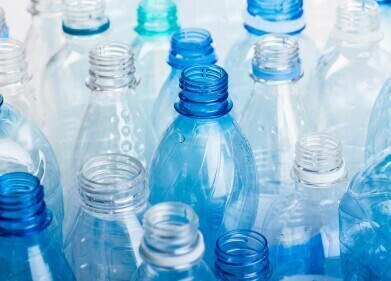Microplastics Analysis
Why COP26 Needs to Talk About Microplastics
Nov 16 2021
So, it’s time for COP26 to tackle transport.
The 26th Annual United Nations Conference on Climate Change has been making headlines long before it officially opened its doors last week – and this flurry of reports shows no signs of letting up as a series of discussions on the controversial issue of transport are convened.
An Electric Atmosphere
The emerging theme has been, predictably, electric vehicles (or EVs, as the lingo has it) – in particular, electric cars. There have been explorations of the state’s role in ensuring a growing consumer-base for electric cars – one market expert delivered an address predicting that without government intervention, eco-friendly driving will remain ‘the preserve of the wealthy.’ In response, several attending countries announced infrastructure projects and targeted subsidies to deliver on these demands, with Australia leading the pack in promising a dedicated budget of around £136 million for new charging points and price-dropping subsidies. Others raised the call for investors to show greater willingness and courage in the sector, to which a number of companies have responded by diverting historic amounts of capital towards research into technologies and acquisition of critical resources like lithium batteries.
All of which, I think you’ll agree, is hugely welcome news. Indeed, if these agreements bear real fruit, they will go a long way towards lowering the rising tides. But, as a number of pressure groups have already pointed out, this discussion has a rather troubling blind-spot. And if it’s not addressed, the tides may be lowered, but they’ll be filled to the brim with microplastics.
The Insoluble Problem
A report by Eunomia suggests that in the U.K., tyres from motorbikes, cars and trucks are the single largest source of microplastic pollution in the island’s oceans. Every year, across Europe, the report claims that around half a million tonnes of tyre-fragments are produced as tyres throughout the continent are worn down by use. Of this astonishing tonnage, the various microplastics which result from further degradation of the fragments represent a somewhat lighter load. Nevertheless, the tyres on roads within the U.K. put about 19,000 tonnes of microplastics into our waterways, rivers and seas each and every year.
Just like their larger siblings, these microplastics are non-biodegradable, potentially taking thousands of years to fully decompose and causing, in the meantime, large-scale disruption to global ecology. As should be clear, microplastics are particularly difficult for the configuration of marine environments (for more information, take a look at our investigation into why Microplastics Threaten Biodiversity of Marine Life). In turn, these disruptions may affect food supplies, even as they continue to flood remaining supplies with larger quantities of potentially toxic microplastics. Indeed, it is as yet unclear just how dangerous microplastics are to humans – but like any other complex biological system, the human body is at risk when incorporating unprecedented quantities of even an inert synthetic substance.
In order to tackle microplastic pollution from tyres, then, we’ll need an increased capacity for monitoring microplastics. Thankfully, a number of new technologies have been and are being developed. Indeed, we recently reported on a fascinating application of machine learning to infrared microplastic monitoring.
But alternatively, taking seriously the threats posed by microplastics might mean taking seriously an alternative approach to reducing transportation emissions. Perhaps, governments should pair their recently-promised aid to the EV industry with initiatives to decrease the amount of vehicles on the road. Not only is this a sure-fire way to reduce emissions but it might also prevent the transition to a green economy becoming just another phase in the massive microplastic pollution of our planet’s oceans.
Digital Edition
IET 34.2 March 2024
April 2024
Gas Detection - Biogas batch fermentation system for laboratory use with automatic gas analysis in real time Water/Wastewater - Upcycling sensors for sustainable nature management - Prist...
View all digital editions
Events
Apr 30 2024 Melbourne, Australia
Apr 30 2024 Birmingham, UK
May 03 2024 Seoul, South Korea
May 05 2024 Seville, Spain
May 06 2024 Minneapolis, MN, USA


-and-Müfide-Aydoğan-Ahbab-(right)[1].jpg)
















